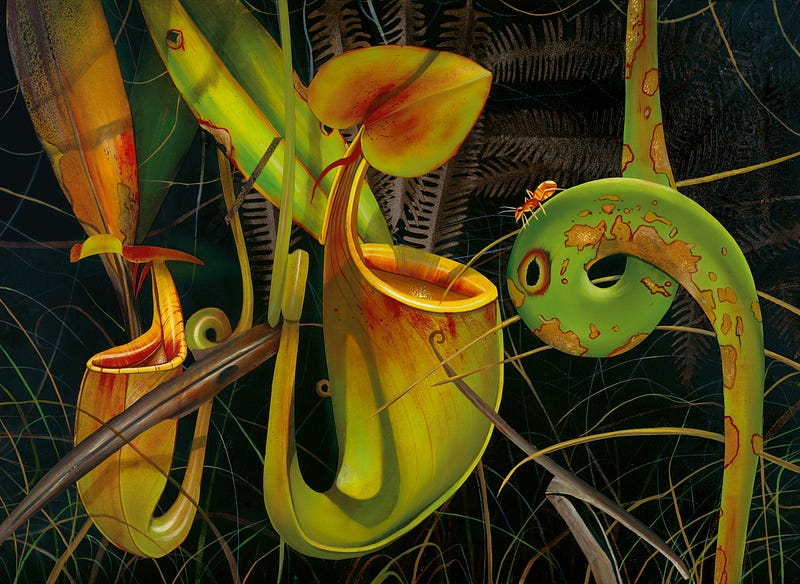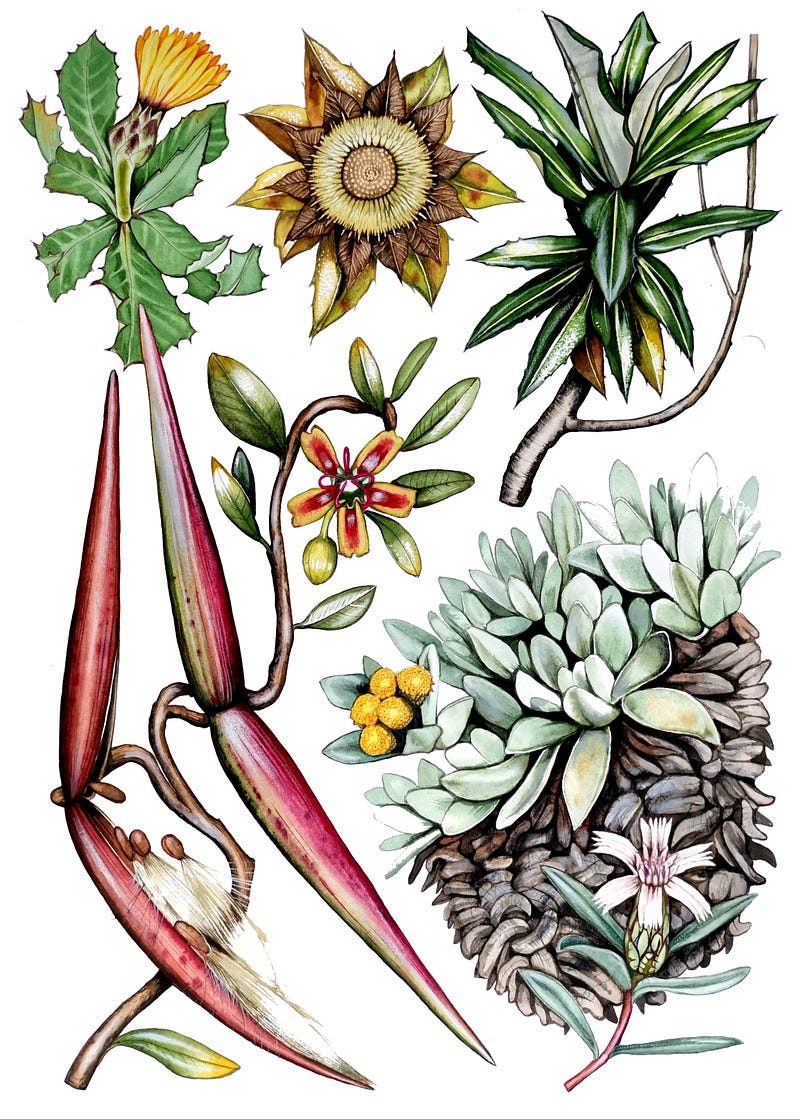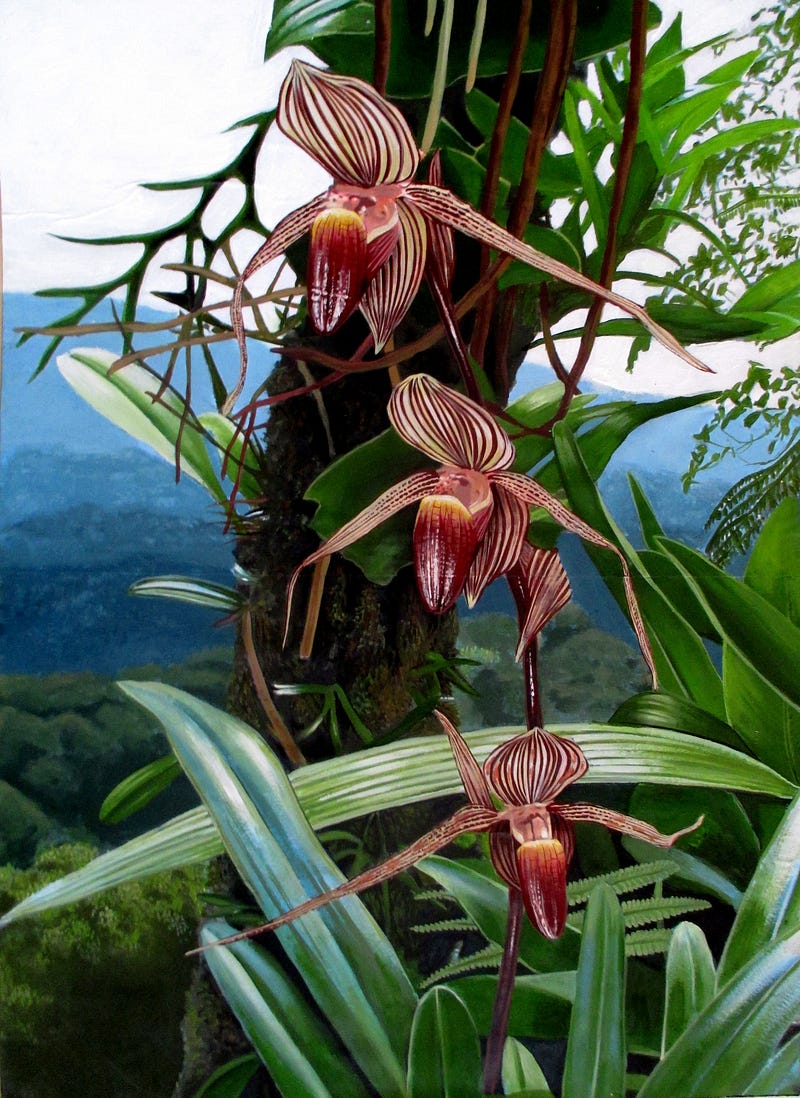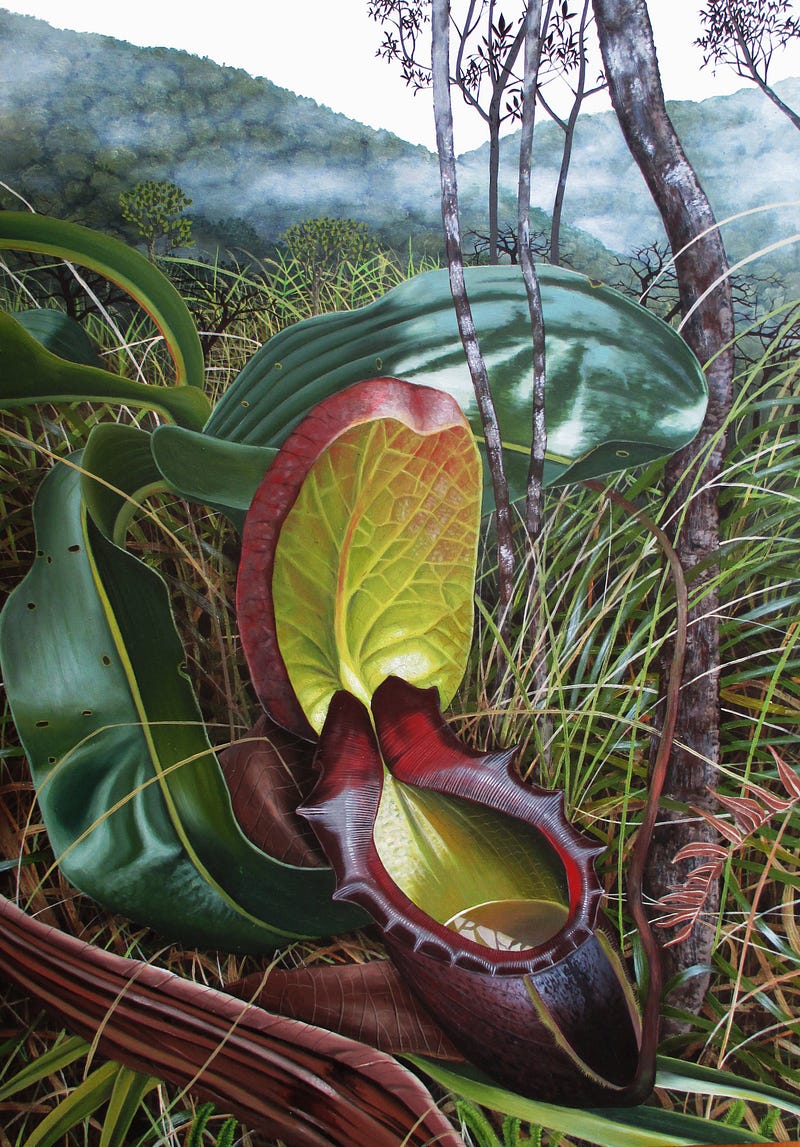Exploring the Intriguing Intersection of Science and Plant Art
Written on
Chapter 1: The Unseen World of Plants
Plants often go unnoticed, their existence overlooked in our daily lives. This phenomenon, referred to as "plant blindness," highlights our common inability to appreciate the significance of flora around us. Coined two decades ago, this term encapsulates how easily we can dismiss the plants that play crucial roles in our ecosystem.
However, not everyone shares this blind spot. One remarkable individual is Chris Thorogood, a botanist and botanical artist who serves as the Deputy Director and Head of Science at the Oxford Botanic Garden and Harcourt Arboretum. Alongside his role as a lecturer in plant biology at the University of Oxford, he passionately devotes his life to the study and representation of plants.
As a child, Dr. Thorogood's fascination with plants flourished in his bedroom, where he nurtured a mini-jungle of succulents and Venus flytraps. He meticulously documented his botanical explorations through drawings, laying the groundwork for his future career.
On a dreary December morning, I stumbled upon one of Dr. Thorogood’s stunning paintings of a rare parasitic flowering plant on Twitter, which piqued my curiosity about his artistry and dedication to the botanical world.
In an email exchange, Dr. Thorogood shared, “I identify as a botanist first. My fascination with the mechanics of life drives my artistic expression; drawing allows me to analyze and reconstruct the intricacies of plants.”
His scientific inquiry delves into plant evolutionary ecology, utilizing molecular techniques to explore host specificity in parasitic plants, along with the ecological dynamics that influence speciation in carnivorous Nepenthes pitcher plants.

Chapter 1.1: The Artistic Journey
Did Dr. Thorogood undergo formal training in art?
“Not really,” he responded. “Art runs in my family, and my scientific background brings a level of rigor that is often found in formal training.”
His artistic process varies; he enjoys working from life when possible, which allows him to engage deeply with the plants he portrays. “This past Christmas, I illustrated plants in the Canary Islands from living specimens, which offers an unparalleled opportunity to appreciate their complexities,” he noted.
Yet, practical constraints sometimes limit this approach. For tropical plants, oil paints—which require extended drying times—necessitate studio work. In these cases, Dr. Thorogood relies on a wealth of photographs, sketches, and scientific literature to recreate the essence of these plants in his artwork.

Chapter 1.2: Capturing Nature’s Authenticity
Dr. Thorogood emphasizes the importance of realism in his art. “I focus on capturing the character of plants, including their imperfections. This approach invites the viewer into the artwork and helps them connect with the subject matter.”
His choice of medium often depends on the context of the artwork. “When creating a series requiring vibrant backgrounds, oils are my go-to. For detailed studies or fieldwork, I prefer watercolors, as they allow for more immediate engagement.”

Chapter 2: Bridging Science and Art
Does Dr. Thorogood's artistic practice enhance his scientific understanding?
“Both science and art are lenses through which I comprehend the natural world. They might appear disparate, but they share a common goal of inquiry,” he explained. His scientific research navigates questions surrounding plant taxonomy and ecological adaptations, fueling his curiosity and creativity.
Illustration remains a vital tool in the conservation of botanical knowledge, preserving insights into biodiversity for future generations. Dr. Thorogood's dual role as a scientist and artist enables him to advocate for plant conservation, emphasizing the intrinsic value of these species.
In the video titled "Can this Plant /Actually/ See?," viewers are invited to explore the fascinating capabilities of plants, enhancing our understanding of their complex behaviors.
The second video, "The Wonderful World of Plants! | A SciShow Kids Compilation!" offers an engaging look at the diversity and wonder of the plant kingdom, making it accessible and enjoyable for audiences of all ages.
Dr. Thorogood's mission resonates with the notion that we share our planet with countless extraordinary species that have existed long before us. He asserts, “We owe it to future generations, as well as to the plants themselves, to ensure their survival. As both a botanist and an artist, I strive to cultivate a deeper appreciation for plants and their critical roles in our ecosystem.”

Chris Thorogood has authored several books, primarily field guides, but one that stands out is "Weird Plants" (Kew Publishing, 2018), which promises to be a delightful read for anyone intrigued by the unusual flora of our planet.
Originally published at Forbes.com on 11 January 2022. © GrrlScientist for Forbes | Twitter | Newsletter